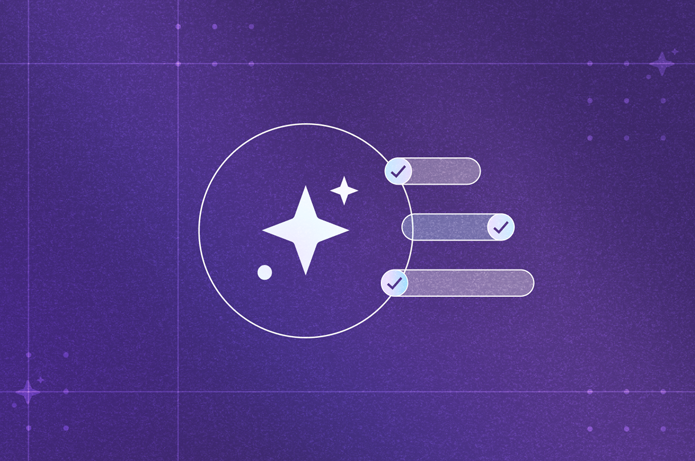Grief is touching every employee in different ways. As some offices reopen and we enter a different phase of the pandemic, workers and their families are grieving a variety of different losses. And the far-reaching impact of COVID-19 continues to increase our need for mental health support. It’s estimated that grief-related losses total more than 75 billion annually, and yet companies have resisted bringing this discussion into the workplace. Data suggests that the cost of implementing even a few changes is less than that price tag, and will ultimately reduce loss of productivity and valued employees. The more that we can normalize discussions of loss and the resulting grief within the working environment, the healthier the company can become.
Reducing the mental health impact of grief
Considerable evidence exists that the acknowledgment and discussion of loss and identifying the feelings associated with that loss helps people function with fewer mental health issues. HR leaders can begin these discussions by first learning to identify grief in employees. This task has proven more challenging in the post-pandemic environment as loss is being experienced by everyone.
From permanent losses such as the way meetings used to be held, groceries used to be purchased, or children attended school to the more identifiable loss of the death of loved ones, co-workers, and even global losses, grief is touching every employee.
Recognizing grief’s new look
As the world continues to change, grief can take on many faces. Here are a few of the most common.
Job loss or a new role
The feeling of loss may be strongest when the employee is laid off or terminated, but loss can also occur if the worker is assimilated into another department within the company.
Some companies have experienced reconfiguration related to the changes in the public’s way of doing business post pandemic, which led to the collapse of entire departments.
Company mergers and acquisitions can also cause feelings of grief and loss, especially for employees who are part of the acquired company.
Unexpected relationship changes
Examples include more commonly identified causes such as divorce, but also the void experienced when a colleague leaves their job or retires. A transition is also required if the employee has a partner who retires and is now ever-present in the home.
Virtual platforms becoming the norm
Many employees miss the face-to-face interaction and connection with colleagues that can’t quite be replicated on Zoom. It doesn't help when an employee is unfamiliar with the technology that's now required in our virtual world.
Family disruption
The ultimate source of grief is the loss of a family member. However, other losses your workers are facing include:
- School day changes, including the drop off line, parental volunteer options, and increased virtual learning components which often require more home supervision
- Continual closing of pre, elementary, and high schools due to COVID exposure
- Loss of an office space separate from the family home, and the work/life boundaries that came with going into the office every day
Failure of projects at work
Sudden restrictions dealt devastating blows to many projects that were launched or on the drawing boards. Compromised travel and reduced funding is still a factor for many companies.
Identifying grief in the workplace
Awareness that loss comes from many aspects in a worker’s life can help People leaders identify even the subtlest signs of grief:
- Inability to focus or make decisions
- Lack of energy
- Demonstrating a range of emotions in a short time—for example, tears to anger
- Hyper-focused behavior
However, awareness needs to include the understanding that grief from loss is not identified through observing behavior based on stage theory. The biggest misconception about grief is that it occurs in five stages only.
HR leaders can better support their employees by affirming that grief comes from a variety of losses, and it’s not necessarily expressed according to a flow chart.
How People leaders can help bridge the gap
Employers can better support grieving employees and ease the transition to a “post-pandemic, new normal life” by empowering HR to take the lead. People leaders can be the link between the employer who wants the job done and the compassionate support the worker requires to be productive and deliver high-quality work.
Here are a few ways to do this at your organization.
Offer bereavement leave
Grief is a process. Everyone grieves in their own way, and needs different amounts of time to grieve. Bereavement leave gives your employees the emotional space they need to process their grief in a healthy way. Offering open-ended time off with the option of remote and flexible working hours is also a compassionate way to support workers.
Build competency by providing trainings on grief
Training for how to recognize the signs of grief in coworkers and employees, along with other mental health conditions that could stem from grief, has become more important than ever. Consider taking a training or workshop on grief, and offering this to your employees as well.
Increase your PTO policy
Providing unlimited PTO, and both offering and encouraging mental health days, not only supports grieving employees but also those who may be dealing with other mental health struggles. If unlimited PTO is not yet a comfortable fit for your company, consider encouraging employees to take their earned PTO as mental health days when needed. The corporate mindset often discourages taking time off—either inadvertently or on purpose—placing higher honor on working 24/7, regardless of the harm done. Another quick-fix for compassionate support is to structure mental breaks throughout the day.
Explore the benefits of music and movement
Both music and movement promotes well being. It is well documented that music can convey the complexity of our feelings better than words. Encouraging grieving employees to incorporate both as mental health breaks during their workday. This can also help recreate the connection with whatever they have lost.
Construct a playbook
A playbook of what to say and what not to say in a time of loss—for example, “how are you today” versus “how are you doing?”—can be extremely helpful for People managers and team members. It’s also so difficult to know what to say, and to avoid saying the wrong thing, we often don’t say anything at all. A playbook can alleviate this worry and also encourage a greater level of communication and support.
Here are a few examples of things to include:
- Instead of “How are you doing?” consider phrasing the question as “How are you today?”
- Instead of “At least they lived a long life,” “There is a bigger reason for this,” or “Stay busy and strong” consider simply “I wish I had the right words for you” or “I know how much you cared for and supported them”
Offer a comprehensive mental health benefit
Innovative solutions like Spring Health are built for the future of work. This means we support the whole employee, their family, and the diverse and evolving needs of organizations worldwide. We provide expanded access to mental healthcare that is precise, personal, and proven, and can help your employees and their families navigate all the different aspects of grief.
The benefits of shifting perspective
Through normalizing the discussion of loss, offering strategies for dealing with it, and maintaining open communication, employers can cultivate a work environment that allows employees, managers and individual contributors at all levels—and the company itself—to build resilience and thrive in a tough, ever-shifting environment.
Grief is not a linear process that can be spread like a blanket across our diverse working culture.

Grieving is messy, and while a more systematic approach may have worked in the past when life seemed more predictable, today’s life is anything but predictable. Our world is still continually changing, and yet employees are often expected to continue to be joyful and productive in the midst of so much uncertainty. By prioritizing mental wellness and normalizing conversations about grief, employers can become the hope that someone is truly listening and cares. This, in turn, can create a productive environment that retains and attracts top talent.
Read this blog next to learn why Wellstar Health System believes that a comprehensive mental health solution should be at the forefront of every benefits strategy.

Melanie Wagner is a writer and editor. Along with scholarly work, she has written a non-fiction children’s book about escaping bullying and finding love and acceptance in unexpected places. She received her BA in professional and technical writing, her MA in English and Ed Leadership, and her PhD in criticism and theory of literature. Melanie describes herself as a lifelong learner and loves to teach, even though she is currently a retired professor.



.png)
.png)
.png)
.png)




.png)




.png)




